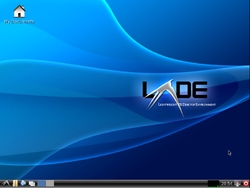This article needs additional citations for verification .(June 2019) |
In computing, lightweight software [1] also called lightweight program and lightweight application, is a computer program that is designed to have a small memory footprint (RAM usage) and low CPU usage, overall a low usage of system resources [ citation needed ]. To achieve this, the software should avoid software bloat and code bloat and try to find the best algorithm efficiency.
